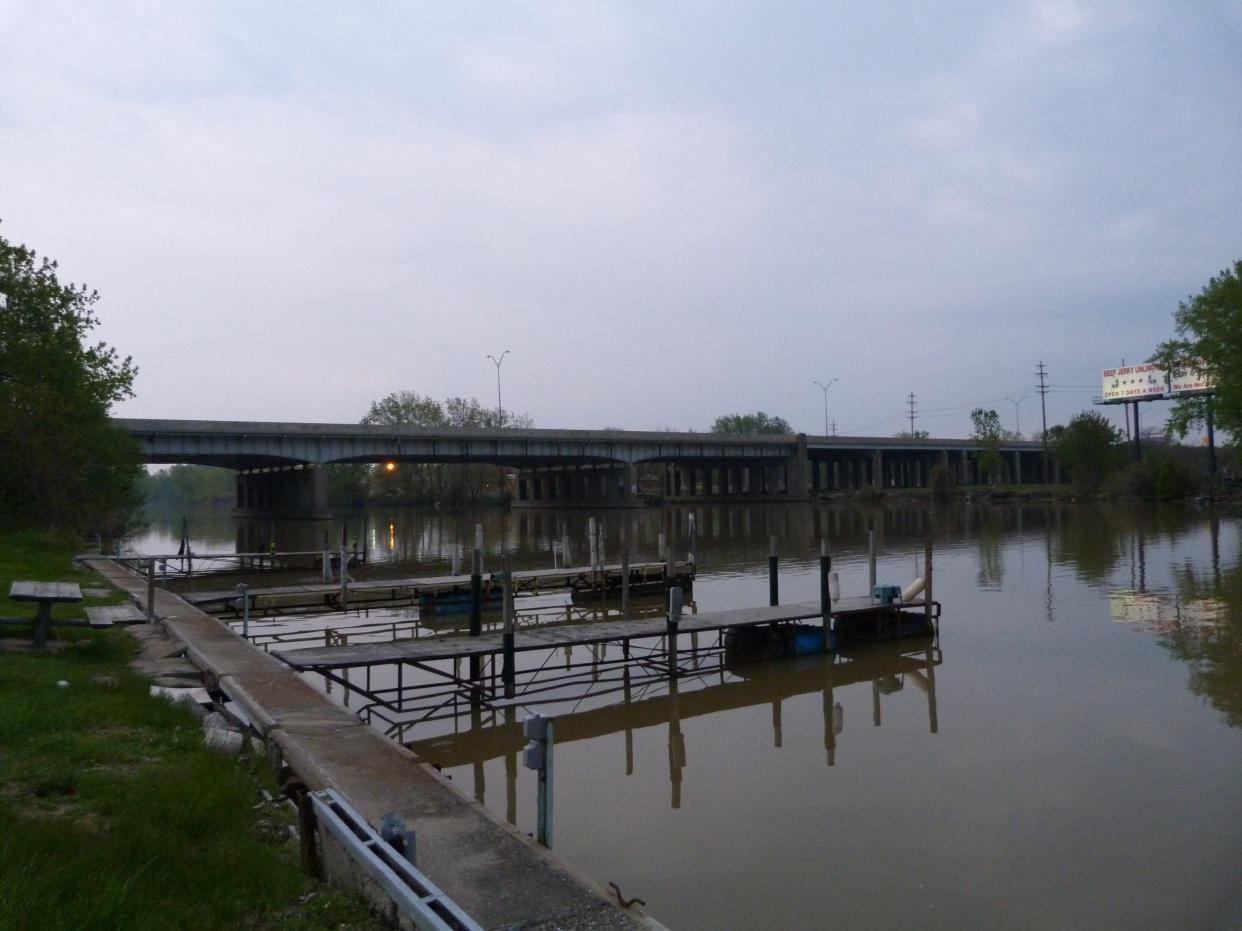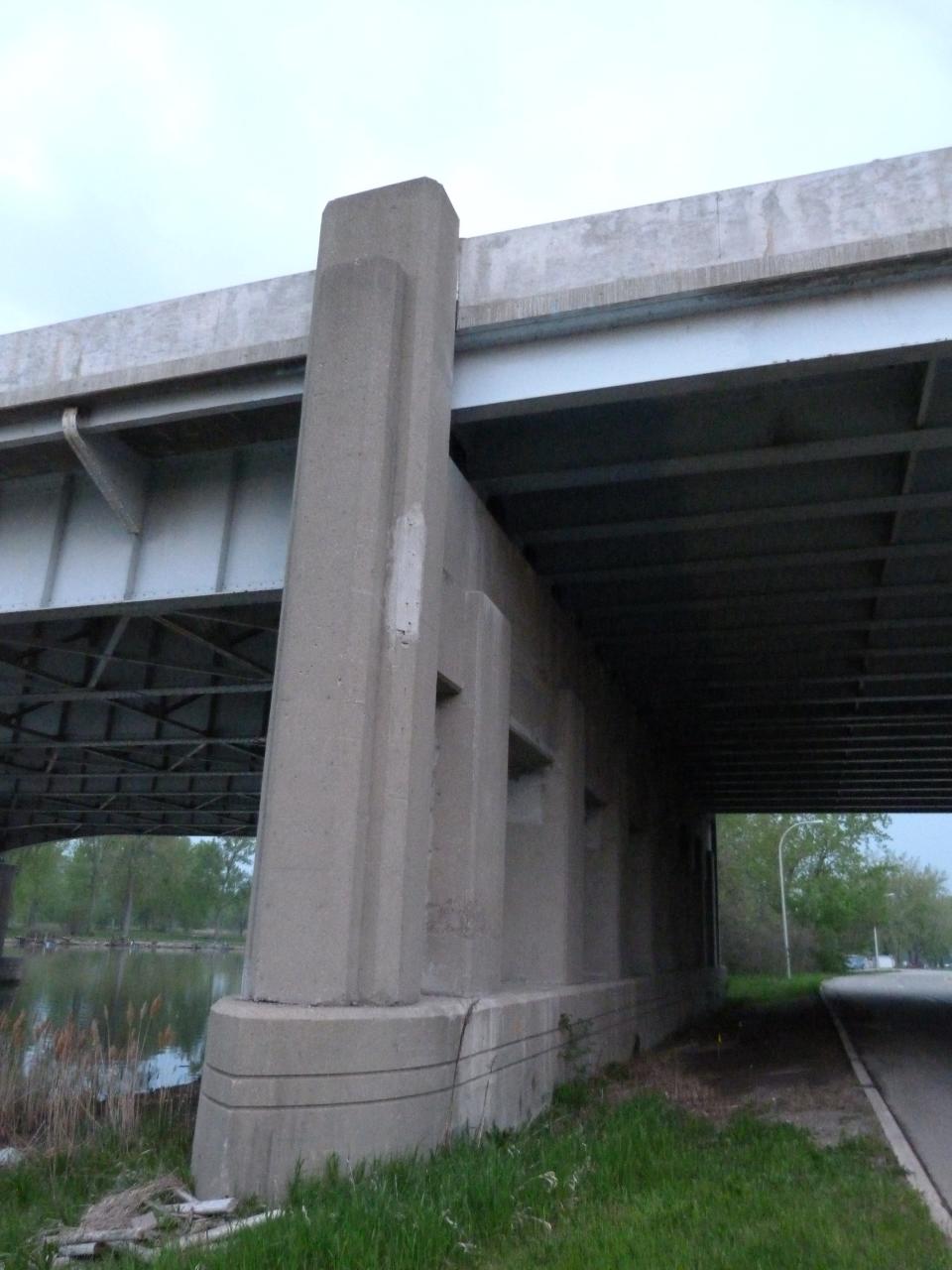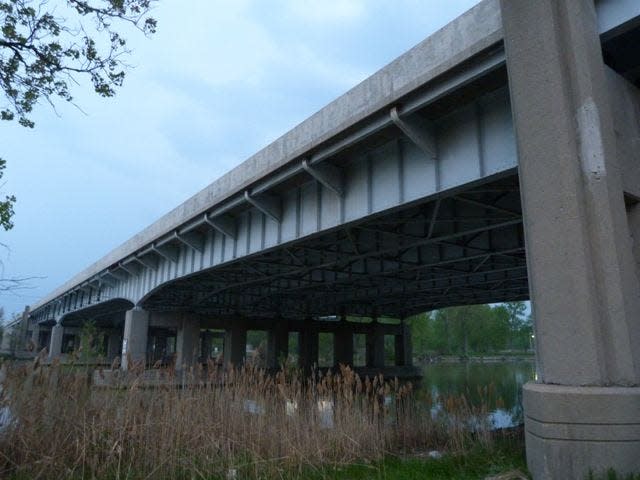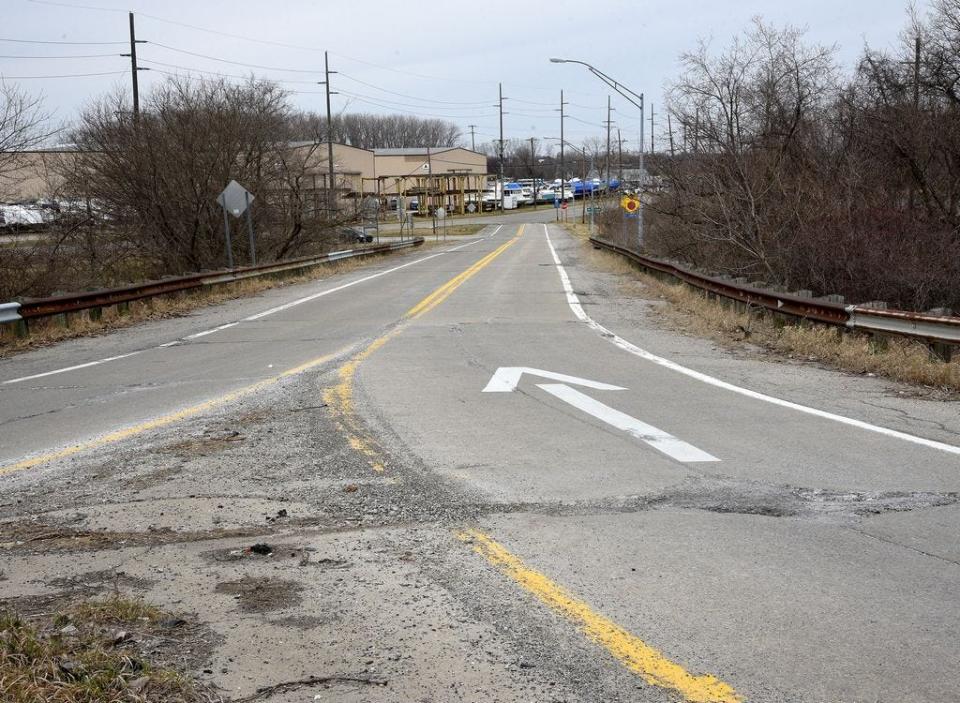I-75 River Raisin Bridge part of 1950s highway construction

In the past, I have profiled the history of local bridges in Monroe County, including both the Monroe Street and Macomb Street bridges. I have also written about the history surrounding Hull’s Trace, the Dixie Highway, and the Detroit-Monroe-Toledo rail lines. One bridge that I’m sure is familiar to all of us that has an interesting, albeit more recent, history is the I-75 River Raisin Bridge.
Thanks again to Nathan Holth, who is the historian and webmaster for HistoricBridges.org and has provided detailed historical information and photos for bridges throughout Michigan. He has kindly shared background information and photos of the I-75 River Raisin Bridge, and I would encourage anyone looking for the most detailed review of bridge history and design to explore the website.

Designed and built in 1955 by Lansing/Wixom’s Walter Toebe and Co. (that has been building and rehabilitating bridges in Michigan since 1922), the I-75 River Raisin Bridge covers 930.2 feet, is 109 feet wide, and has a main span of 157.8 feet. Holth describes it as a large and wide example of a variable depth "haunched" deck plate girder bridge. It was a popular Michigan design in the mid-20th century to span floodplains and larger river crossings that dot Michigan’s topographical profile. The I-75 River Raisin Bridge features eight approach or “stringer” spans in addition to three main spans to carry the bridge over the River Raisin and the Dixie Highway, which became the first highway in Michigan in 1829. The I-75 River Raisin Bridge was designed with split roadways. A narrow joint separates the two halves of the bridge. The three main spans, which cross the River Raisin, feature steel plate deck girder construction, with eight girders per span.
Toebe’s company submitted the low bid of $1,477,681 for the I-75 River Raisin Bridge in July 1954. It had built the I-96 Bi-Level Bridge (then known as the South Cedar Street Bridge) in Lansing in 1952 and the M-63 Bridge over CSX Railroad Bridge in St. Joseph. Up until that time, these three projects were the largest in Michigan during the post-World War II highway and trunkline expansion and would predate by less than a year the establishment of the U.S. Interstate Highway System (via the Federal-Aid Highway Act of 1956 signed into law by President Dwight D Eisenhower).

The I-75 River Raisin Bridge also represented the largest structure built on the Detroit-Toledo Expressway, which was designed to move traffic off of Dixie Highway to the east of Monroe and Telegraph Road (built in the 1920s) to the west. I-75 was officially opened in 1956, with surveying along the entire 25-mile inaugural stretch starting in 1952 and bridge work beginning a year later. It joined I-94 as the most completed highway projects in Michigan in the mid-1950s.
Other important features of the I-75 River Raisin Bridge are its height, which was required for clearance of the railroad tracks and city streets near each abutment. Replacement of railings and introduction of Jersey barricades to divide the structure in the mid-2000s are the only alterations to the original design.

In 2022, the Michigan Department of Transportation began an I-75 Front Street/Elm Avenue Planning and Environmental Linkages (PEL) Study in Monroe to solicit public input on what the area could look like in the future. A PEL study, according to MDOT, identifies transportation issues while considering environmental concerns.
The FY 2028 project proposes closing the Elm Avenue interchange and realigning the Front Street interchange to the south in some of the proposed plans. The project also analyzes the I-75 stretch in Monroe County from the LaPlaisance Road interchange to the Dixie Highway interchange.
Tom Adamich is president of Visiting Librarian Service, a firm he has operated since 1993. He also is project archivist for the Greening Nursery Co. and Family Archives and the electric vehicle awareness coordinator at Monroe County Community College.
This article originally appeared on The Monroe News: I-75 River Raisin Bridge part of 1950s highway construction

